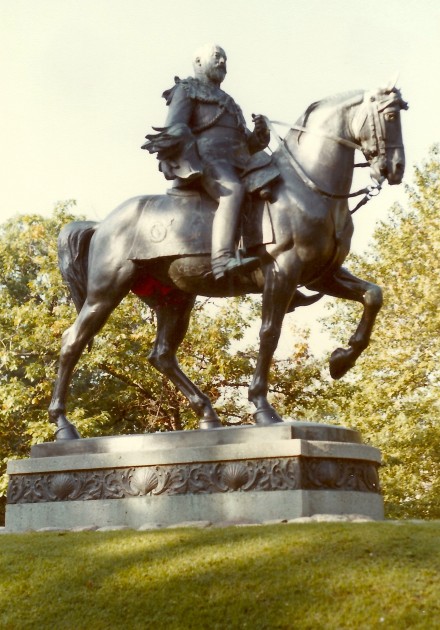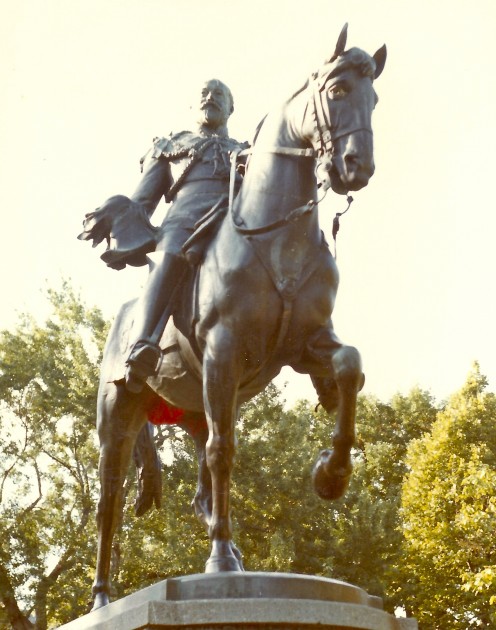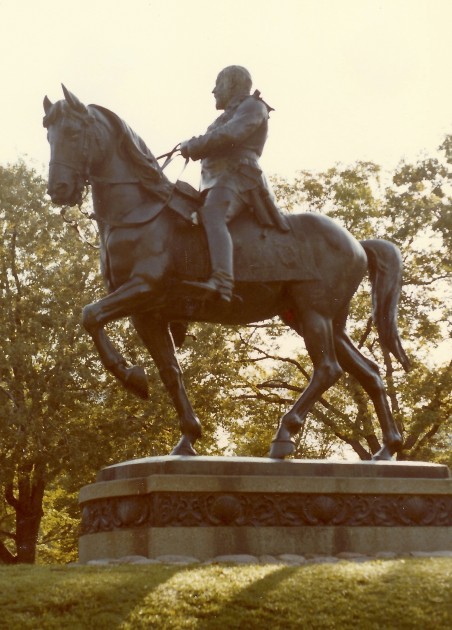- CountryCanada
- Town:Toronto
-
Year of creation:1922
- Rider(s):Edward Vll
(1841 –1910) was King of the United Kingdom of Great Britain and Ireland and Emperor of India from 1901 until his death in 1910.
The eldest son of Queen Victoria and Prince Albert of Saxe-Coburg and Gotha, Edward was related to royalty throughout Europe. He was Prince of Wales and heir apparent to the British throne for almost 60 years. During the long reign of his mother, he was largely excluded from political power, and came to personify the fashionable, leisured elite. He travelled throughout Britain performing ceremonial public duties, and represented Britain on visits abroad. His tours of North America in 1860 and the Indian subcontinent in 1875 were popular successes, but despite public approval, his reputation as a playboy prince soured his relationship with his mother.
As king, Edward played a role in the modernisation of the British Home Fleet and the reorganisation of the British Army after the Second Boer War. He reinstituted traditional ceremonies as public displays and broadened the range of people with whom royalty socialised. He fostered good relations between Britain and other European countries, especially France, for which he was popularly called “Peacemaker”, but his relationship with his nephew, the German Emperor Wilhelm II, was poor. He died in 1910 in the midst of a constitutional crisis that was resolved the following year by the Parliament Act 1911, which restricted the power of the unelected House of Lords.
(source: Wikipedia)
- Sculptor(s):Brock, Thomas
(1847 –1922) was an English sculptor
In 1901 Brock was asked to make a colossal equestrian statue of Edward the Black Prince for Leeds City Square, and was also given perhaps his most significant commission, the vast multi-figure Imperial Memorial to Queen Victoria to be set up in front of Buckingham Palace. According to legend, at the unveiling of the memorial in 1911, George V was so moved by the excellence of the memorial that he called for a sword and knighted Brock on the spot.
-
The statue of Edward VII originally stood in Delhi (India). Following Indian independence, the statue was put into storage, like many other statues of British rulers. Henry Jackman had the idea that Toronto was missing an equestrian statue, so he organized the exile there of Edward VII. The statue was cut into three pieces, shipped to Toronto, re-welded and erected in 1969. For unknown reasons, the testicles of the steed had been painted red when I saw the statue in 1982.










